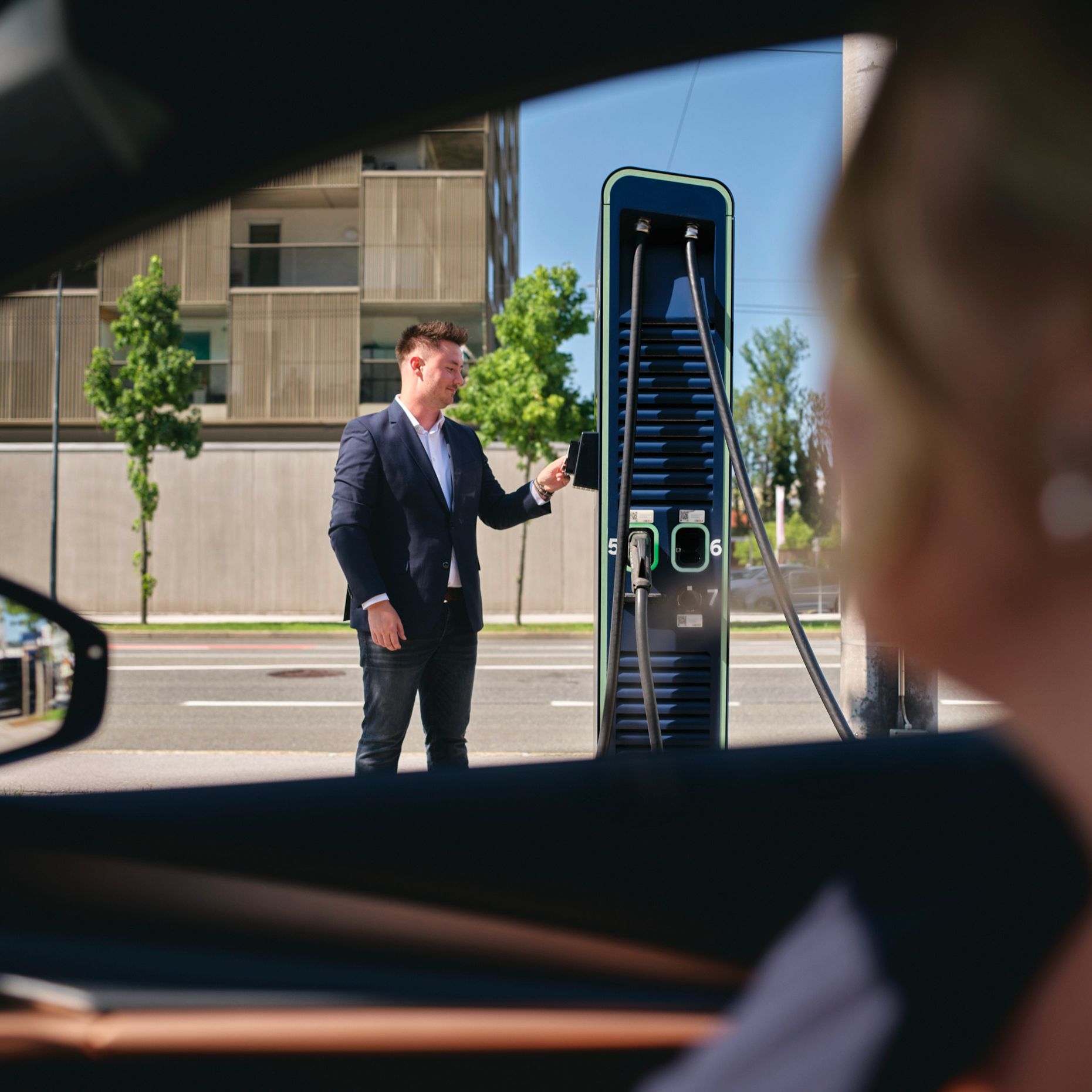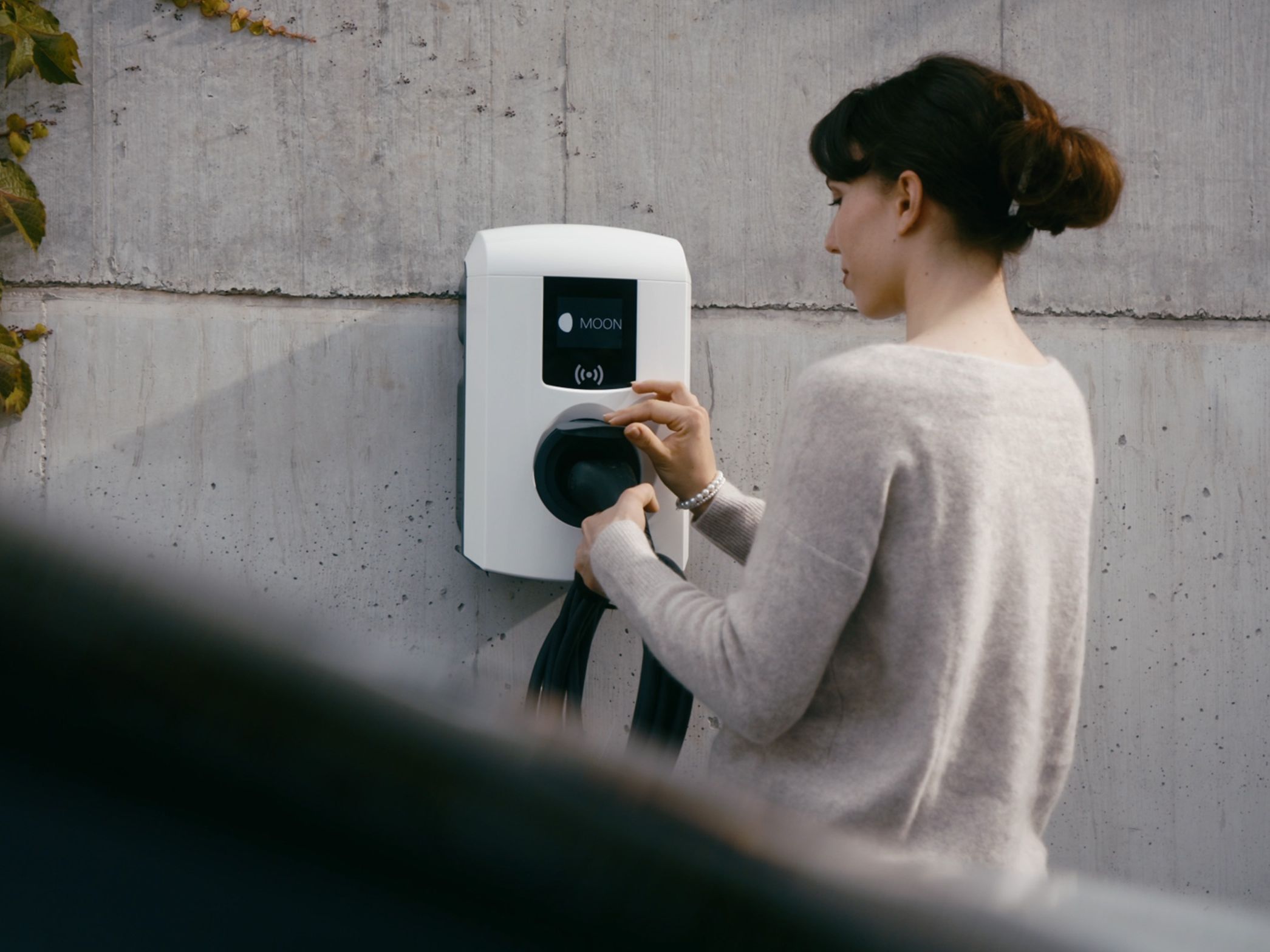
Find out how DC charging works, what legal measures and billing options there are and why a DC charging station pays off.

Fast charging at a DC charging station is one of the key technologies driving electromobility forward. Due to the rising demand for electric vehicles, it is becoming increasingly important to be able to charge them quickly and efficiently. Not only the technical basics and the infrastructural requirements are decisive, but also the various regulations and billing options that affect this procedure. What do you have to pay attention to if you want to build a charging park? What are the legal requirements and what options are there for billing the charging processes? Is it worth investing in DC chargers at all? This article offers an insight into the innovative charging method and shows how it can revolutionize electric mobility.
What technical measures are there?
The first step in being able to implement a project to expand the charging infrastructure is to choose a grid operator for the available grid connection power. Such power is best available on the existing transformer. If there is not enough power provided at the transformer, the transformer will need to be replaced, which can delay the project due to long delivery times. Once these requirements have been clarified, there are a few factors to consider that can be decisive for whether the charging park will be a success. On one hand, an attractive location is important. In contrast to the construction of a hotel or apartment block, locations near a busy road – for example, a highway or another main traffic route are suitable. Furthermore, there should be sufficient visibility. If obstacles such as signs or the like impair visibility, this can be compensated for with suitable lighting. Another point is price transparency: If customers can easily see how much charging costs, they are more likely to decide to take advantage of the offer. In addition, minimum distances and access routes should be included in the planning so that the charging park is easily accessible. Structural measures such as barriers, kerbstones or bollards must also be erected to prevent damage to the charging infrastructure or the vehicles being charged.
Legal measures
In order to be able to build a DC charging station, in addition to the technical measures mentioned, legal measures must also be taken into account: According to the Regulation on the Development of Alternative Fuels Infrastructure (AFIR), which applies to all EU countries, publicly accessible normal and fast charging points must be displayed, this is not necessary for non-public charging points though. Inclusion in the charging station register can be made by the charging station operator (CPO) via Ladestellen.at or E-Control. In addition, charging facilities must be registered with the responsible grid operator at an early stage by a responsible electrician. According to the Federal Act on the Establishment of Uniform Standards for the Development of Infrastructure for Alternative Fuels, the following guidelines must also be complied with:
Payment options for charging processes
To pay for the charging sessions at the DC charging station, it is necessary that there are several payment options. The goal is to make the charging process simple, barrier-free and transparent. It should be possible to charge e-cars without a smartphone, subscriptions, charging cards or apps. But what are the concrete options? A frequently used option is the Plug & Charge principle, in which the vehicle starts the charging process on its own. There is also the option of authorisation using a charging card or an app from the mobility provider. In addition, it is possible to scan a QR code and make payment online with your mobile phone or pay with a credit or debit card directly at the payment terminal.
DC charging station from MOON
MOON POWER's DC charging stations offer an excellent solution for anyone looking to invest in the future of fast and efficient charging. Equipped with state-of-the-art technology, the charging stations not only enable ultra-fast charging of electric vehicles, but are also characterized by a user-friendly interface and flexible billing options. Thanks to the high charging capacity, electric vehicles can be made ready for use again in the shortest possible time – ideal for highly frequented locations where short charging times are crucial. In addition, the products from the MOON portfolio comply with current regulations and offer a future-proof investment that will remain economically viable for years to come. The charging infrastructure is scalable and adaptable to a wide range of business models, making it a worthwhile option for operators looking to invest in EV charging infrastructure.
Is a DC charging station worth it?
The point at which the investment in a DC charging station is worthwhile depends on several factors. Depending on the choice of location, the grid connection, the length of stay of the customers and whether there are subsidies, the amount of income varies. In any case, it can be stated from numerous forecasts that the demand for charging infrastructure will increase in the future. The technology not only enables shorter charging times, but also represents a crucial infrastructure for the increasing number of electric vehicles. However, the associated regulations and billing options must be well understood and thought through in order to ensure efficient and economical use. Investing in DC charging stations can be worthwhile – especially in highly frequented areas or on expressways, where the demand for fast charging is particularly high. Nevertheless, operators should carefully weigh the costs and potential revenues and also keep an eye on the long-term benefits of the infrastructure. Overall, DC charging offers great potential for operators and users, provided that the factors mentioned are taken into account.
We are always at your disposal for further information and inquiries. Get a free and non-binding consultation now.

-(1))
Knowledge & Facts
DC charging as a signpost to e-mobility
Find out everything about DC charging, what advantages it has and for which applications it is suitable.

Knowledge & Facts
Electromobility put to the test
These misconceptions exist around the topic of electromobility. Find out what's really behind the false assumptions.

Knowledge & Facts
Charging company cars at home: requirements, installation & billing
Find out how you can charge your company car conveniently at home. We give you practical tips for installation and billing.